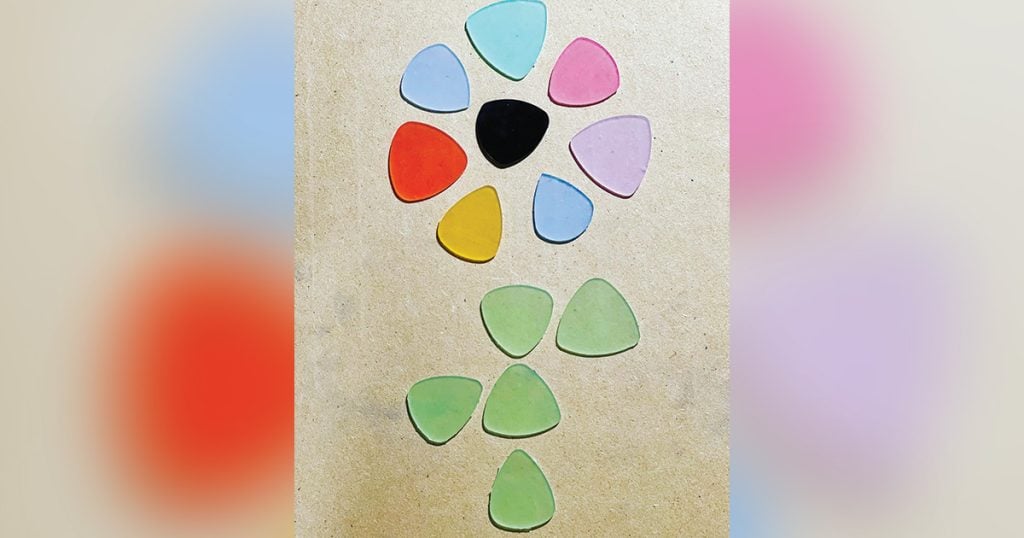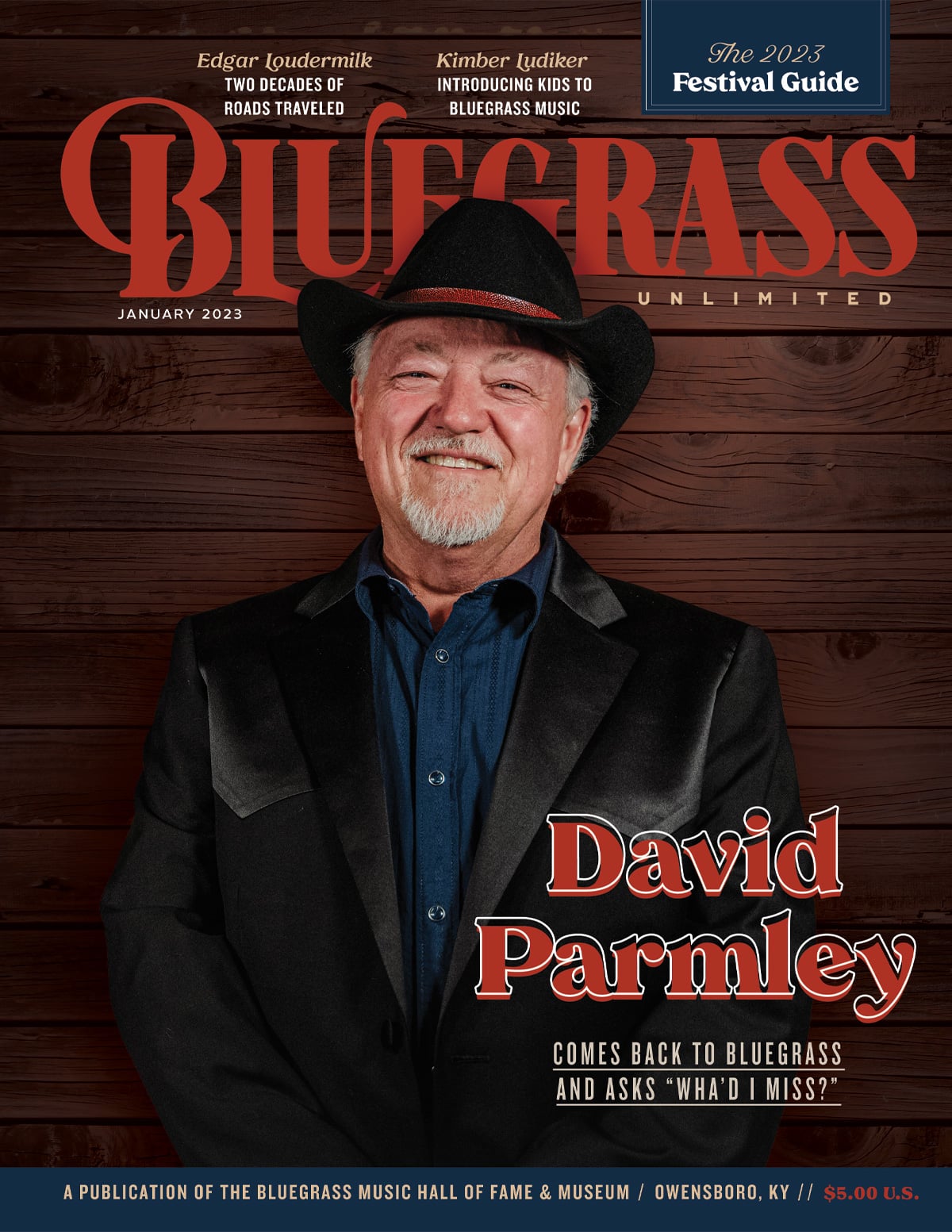ToneSlabs Changes The Flatpick Game
ToneSlabs is the biggest advance in flatpack technology since the launch of BlueChip picks 14 years ago. That’s a bold statement, to be sure, and we don’t make it lightly.
For months, Bluegrass Unlimited has been testing a variety of ToneSlabs picks in various shapes and thicknesses in the field at Winfield and IBMA, as well as home tests comparing it side-by-side to all comers. The ToneSlabs pick at least equaled any rival, but often sounded richer, fuller, and more focused in many player’s ears.
David Welch, who cofounded the company with award-winning bluegrass mandolinist and bandleader Frank Solivan, says he’s not surprised. “We … simply have people empty their pockets, and play every pick they have against ours at the same shape and thickness. We did this for hours at the Acoustic Shoppe booth at IBMA, and 100 percent went straight to the register and bought a pick,” he relates. I witnessed similar reactions.
Co-founder Solivan weighs in: “I’ve been searching for the perfect tone most of my life. Even making my own picks for years. I have no doubt that players will hear and feel the difference once they have a chance to play one of our plectrums. We see that ‘wow factor’ every time we hand one to a player and they run it across the strings. ToneSlabs sell themselves.”
One commercial dealer, Elderly Instruments, added this recommendation: “The premium ToneSlabs Tri Corner combination of hardness, rigidity, density, design and top-shelf bevel techniques exceeds the tonal qualities of historically prized, endangered tortoiseshell. ToneSlabs are the key to volume, clarity, and note separation.” Sure, they want to sell a ton, but consider the source.
So what is the secret sauce in these premium-priced picks, which go for $45 apiece? Understandably the company is reluctant to divulge any meaningful information, like the chemical composition of the material.
“At the moment we’re not disclosing the material composition. We’ve worked so hard to get everything just right, from density to pigment saturation. As far as the manufacturing of the picks, it does take some time. First I get the material to a ‘rough workable’ thickness. Then, using CNC, I cut the blanks. From there, I hand-work the picks to exact thicknesses (within .03mm tolerance). Next comes hand-beveling, then polishing. All told, it’s about anywhere from 45 minutes to an hour per pick worked by hand,” Welch answers.
One key ToneSlabs attribute is the super-precise beveling, which the company claims lets the pick slip more crisply off the strings. The mystery material also is hydrophilic so the picks don’t slip. If there’s a drawback, it’s that the material is semi-transparent, in pastel colors, which can make finding a dropped pick at night at a festival difficult. Trust me, you’ll find it.
Are they worth the investment? Only the player can make that decision, and there are tons of boutique picks out there to try. But if you chase the perfect flatpick tone dragon, ToneSlabs, available in more than 10 shapes with custom orders encouraged, may be the closest you’ll come to plectral perfection, Dobrolic or otherwise. For now. www.toneslabs.com

